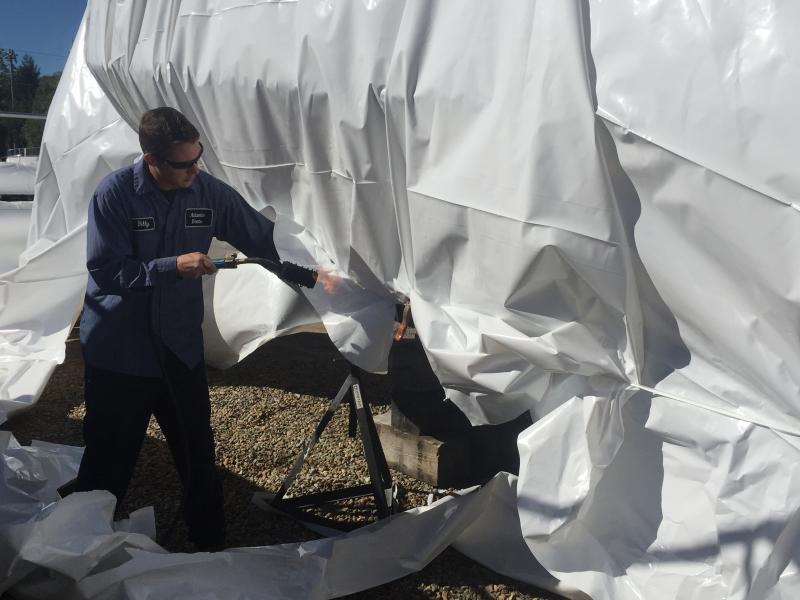Boat yard business heats up as weather cools down
With cooler weather here, the state’s 134,678 registered boat owners are winterizing their vessels, a process that requires a varied skill set when done properly.
The extensive check list required before a boat is tucked away for the season makes this time of year one of the busiest for the 30-member staff at Atlantic Boats, Inc., said Yard Foreman Jamie Cornish.
“Our boat mechanics are also electricians, plumbers, carpenters and whole lot of other things,” said Cornish. “If we can’t do a repair better than a customer then we shouldn’t be doing it at all.”
At Atlantic Boats, located at the intersection of Cranberry Highway and Route 25 in East Wareham, between 500 to 600 boats will be prepped and stored for the winter. The boats are stored either in the yard or at the company’s new, 15,000-square-foot facility.
The process starts with a pressure wash of a boat’s hull. It’s then taken inside a repair facility for a thorough check up.
Fluids are drained, motors, engines and other systems are broken down and looked at as well as other working parts.
“From bow to stern, we go through the whole vessel,” said Jeffrey Veaudry, who has been with Atlantic Boats for three years.
Veaudry said the yard handles all kinds of vessels – everything from a 10-foot inflatable raft to a 42-footer with twin diesel engines.
Depending on the type and size boat, the winterization can be complex, said Veaudry.
Stabilizing the fuel system, a compression check, changing the oil and fuel filters, an engine flush and many more procedures are all part of the process, and they should be on any owner’s list before stowing a boat.
Depending on the boat’s condition and size, winterization could cost anywhere from a couple hundred dollars to a couple thousand dollars.
The bill could save someone money in the long run, said Cornish, who added that if motors aren’t correctly drained the cold weather will freeze any leftover fluid, cracking the engine.
The process ends with shrink-wrapping the boats.
A wooden frame is installed over the boat to keep the plastic sheeting from drooping close to the deck.
Billy Gay, a member of the yard crew, said shrink-wrapping can be an idiosyncratic process.
“Everybody has their own way of shrink-wrapping because it’s a skill that you learn as you go,” he said. “I think we’ve perfected it.”
Once the sheeting is pulled over the boat, some parts are clamped to the boat and the excess is trimmed.
Using a propane torch, Gay melted the plastic against itself, sealing in the boat from the elements.
In fact, the boat is so protected that it’s extremely important to make sure there’s no moisture inside the boat before it’s wrapped, said Gay.
Otherwise, mold grows, which is not something a boat owner is looking forward to dealing with when warm weather returns.
To watch video of a boat being shrink-wrapped, see below.













